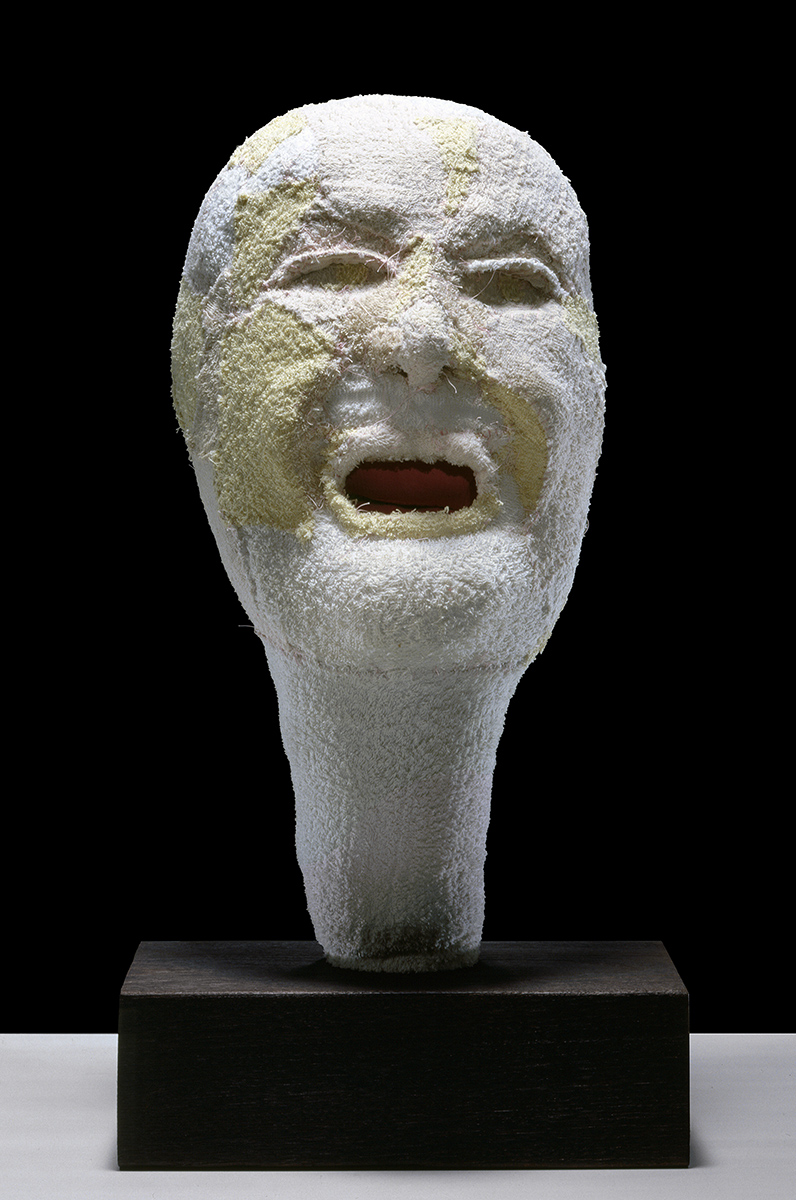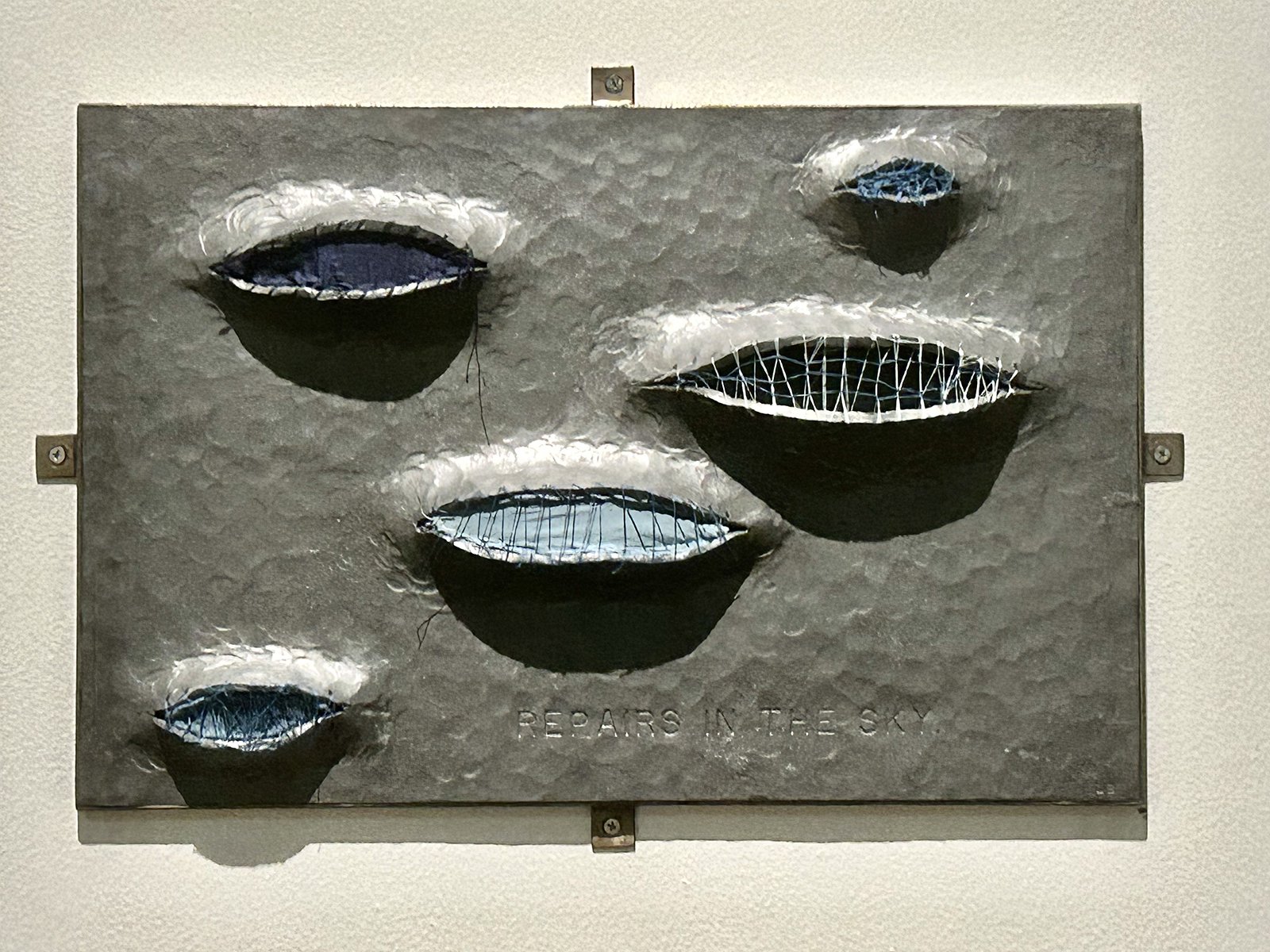LOUISE BOURGEOIS: I HAVE BEEN TO HELL AND BACK. AND LET ME TELL YOU, IT WAS WONDERFUL
HAPPENINGText: Alma Reyes
In the second chapter, I Have Been to Hell and Back, multiplex conflicting feelings of abandonment, spite, fear of intimacy, and even suicidal impulses come to light. Rejection (2001), the almost frightening bust in fabric, steel, wood and lead, stares agonizingly into space, with mouth agape, and sheds discrepancy between the softness of textile and the tortured facial appearance. The artist claims, “Art is an exorcism, a tool for survival.” In the same room are intriguing stark red holograms illuminating scenarios in a prison cell. Next to it is a huge installation of steel fire doors, Culprit Number Two (1998), enclosing a single chair, as though condemning someone to guilt and punishment. These works are part of The Cell series produced in the early 1990s.
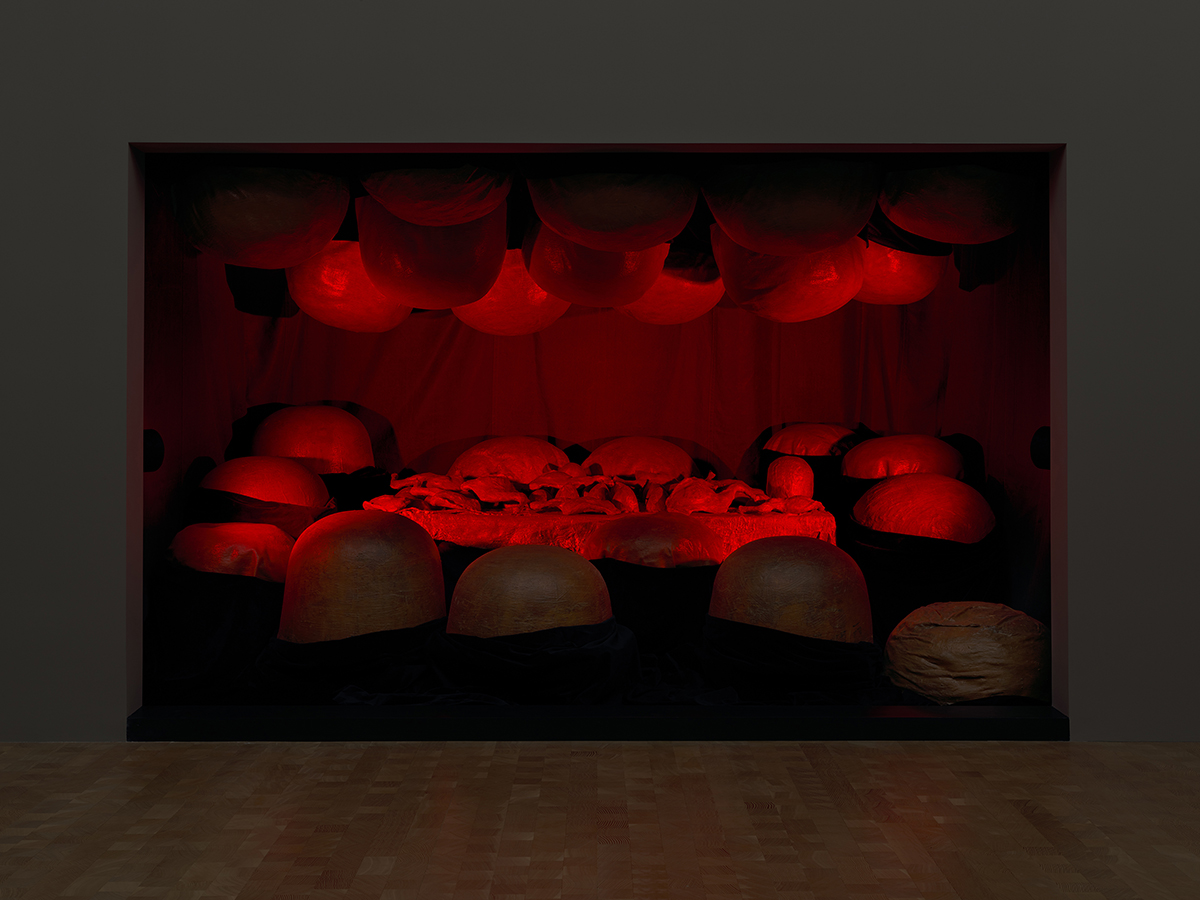
Louise Bourgeois, The Destruction of the Father, 1974, Collection: Glenstone Museum, Potomac, MD, USA, Photo: Ron Amstutz © The Easton Foundation/Licensed by JASPAR and VAGA at Artists Rights Society (ARS), NY
Perhaps, one of the most hair-raising artworks, The Destruction of the Father (1974) shatters Bourgeois’ domineering father’s memory into a cannibalistic stage of phallic and breast-like shapes looking down on meat and body organs, which suggest sacrifice and revenge. Bourgeois fantasized her mother and siblings consuming her father. The elements are trapped in a womb-like room, eerily lit in red, and resembling a prison for criminals. Throughout the exhibition, we grasp Bourgeois’ disdain for her father that had caused her to struggle against violence, aggression and insecurities.
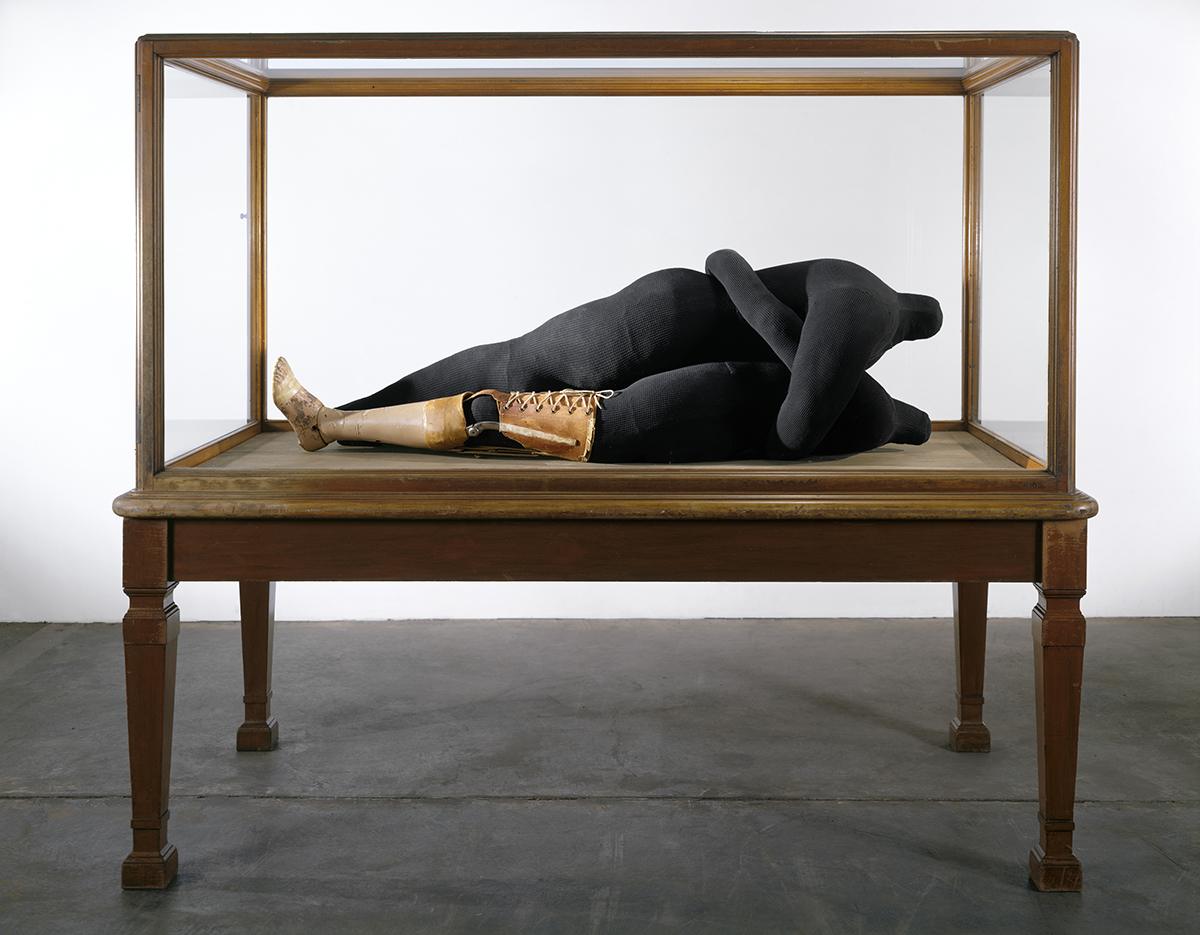
Louise Bourgeois, Couple IV, 1997, Photo: Christopher Burke © The Easton Foundation/Licensed by JASPAR and VAGA at Artists Rights Society (ARS), NY
Such intensity of mourning, susceptibility, and fear of separation is also felt in Couple IV (1997). The headless couple in black fabric is intertwined in affection, yet suffocate inside the airless glass case. The woman’s prosthetic leg symbolizes disequilibrium and danger of dependency on one another.
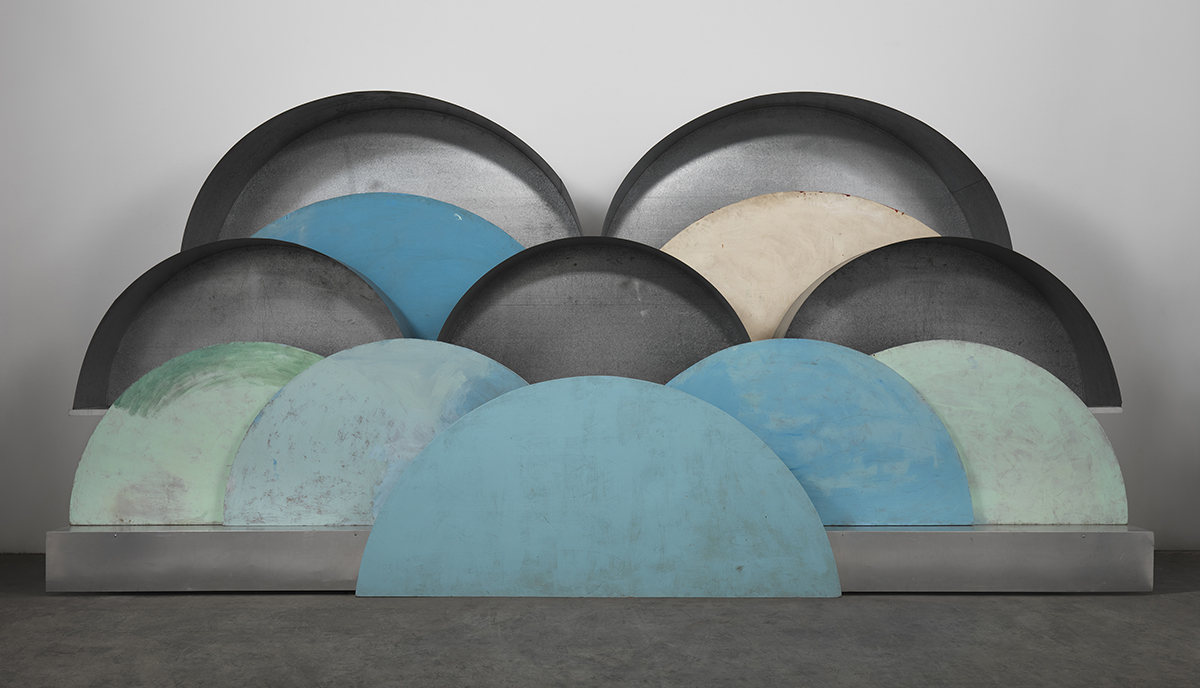
Louise Bourgeois, Clouds and Caverns, 1982-1989, Photo: Christopher Burke © The Easton Foundation/Licensed by JASPAR and VAGA at Artists Rights Society (ARS), NY
In an effort to mend Bourgeois’ anomalous relationship with her mother and father, the third chapter Repairs in the Sky reconciles family relationships, forces of consciousness and unconsciousness, and of the past and the present. The same titled artwork Repairs in the Sky (1999) illustrates five punctures, dedicated to her two families, and are stitched with blue thread, suggesting freedom and restoration. The peaceful Clouds and Caverns (1982-1989) in metal and wood seems to have taken the artist to a retreat of blue landscapes enhanced by rounded curves of the female body.
Many works utilize fabric, a very sensitive material for Bourgeois, which she believed would preserve her memories even after her death. Textile bonded her with the people who owned them — her mother’s dresses or her husband’s undergarments. As a young child, watching her mother restore antique tapestries by hand specially transferred such handiwork skill to her love of fabrics. In particular, her father’s extra-marital affairs induced her passion for sewing as a means to safeguard her mother.
Visitors are recommended to take time to watch Bourgeois’ narrative videos. Her voice and facial expression carves the deep and unfathomable affliction she had experienced in life. In her own words, “My childhood has never lost its magic, it has never lost its mystery, and has never lost its drama.”
Louise Bourgeois: I have been to hell and back. And let me tell you, it was wonderful.
Date: September 25th, 2024 – January 19th, 2025
Hours: 10:00 – 22:00 (Tuesday till 17:00)
Place: Mori Art Museum
Address: 53F, Roppongi Hills Mori Tower, 6-10-1 Roppongi, Minato-ku, Tokyo
Tel: +81 (0)47 316 2772
https://www.mori.art.museum
Text: Alma Reyes
Photos: Ron Amstutz, Christopher Burke, Philipp Hugues Bonan, Mori Art Museum © The Easton Foundation/Licensed by JASPAR and VAGA at Artists Rights Society (ARS), NY

